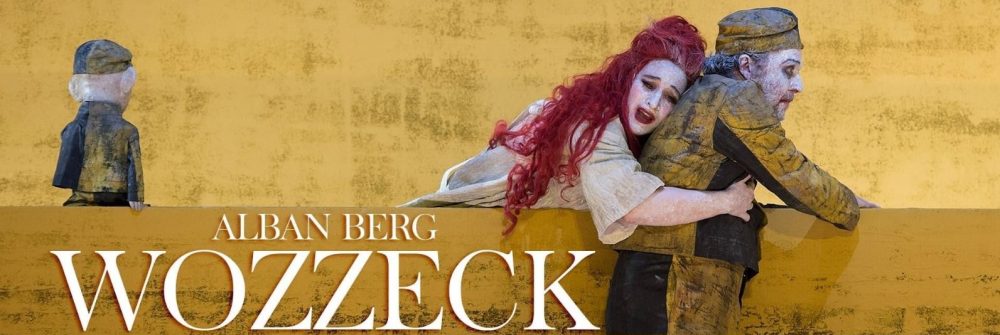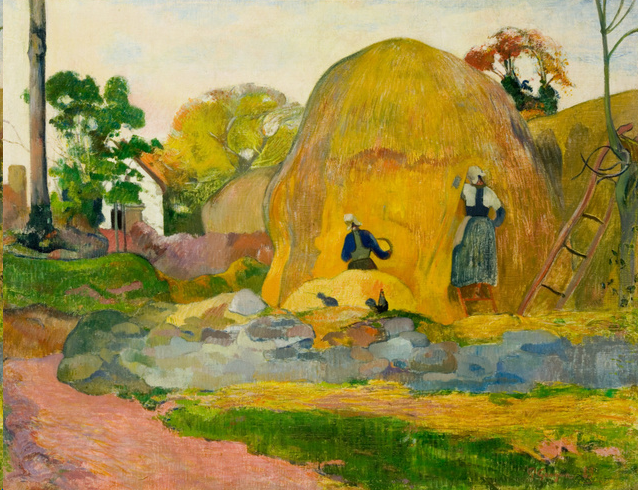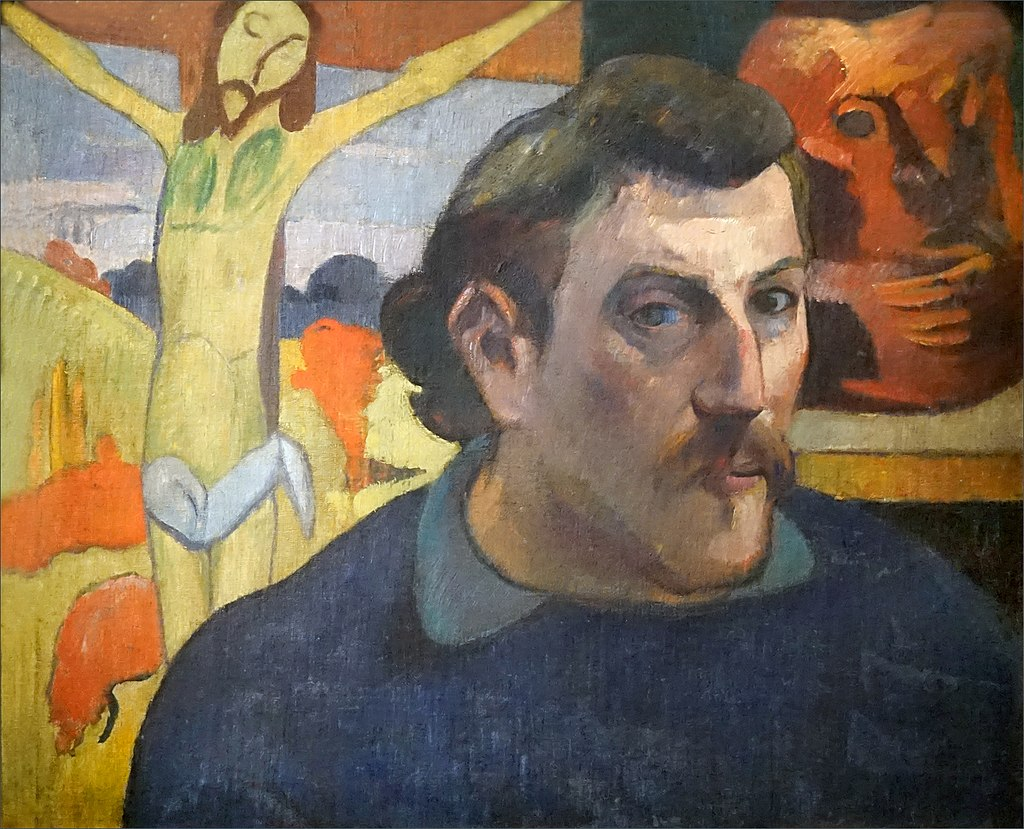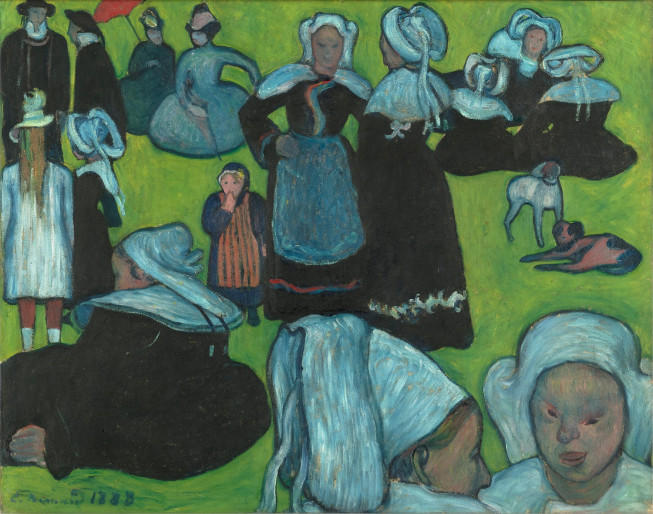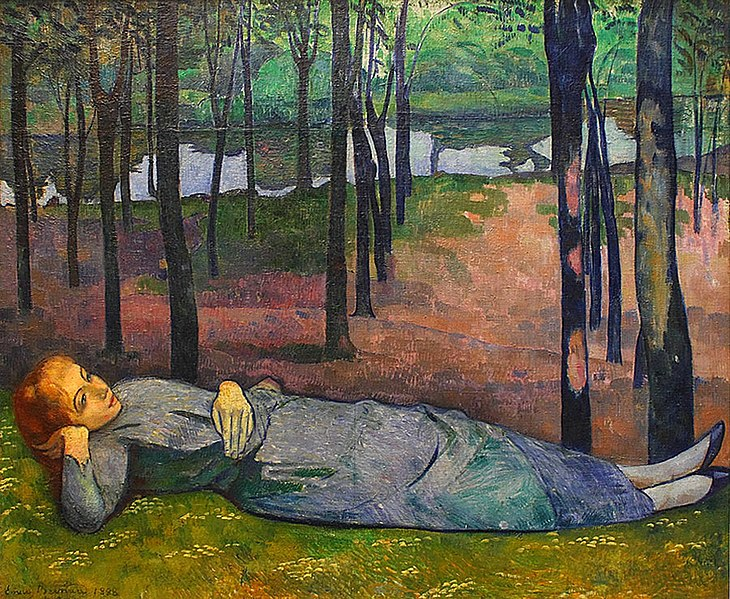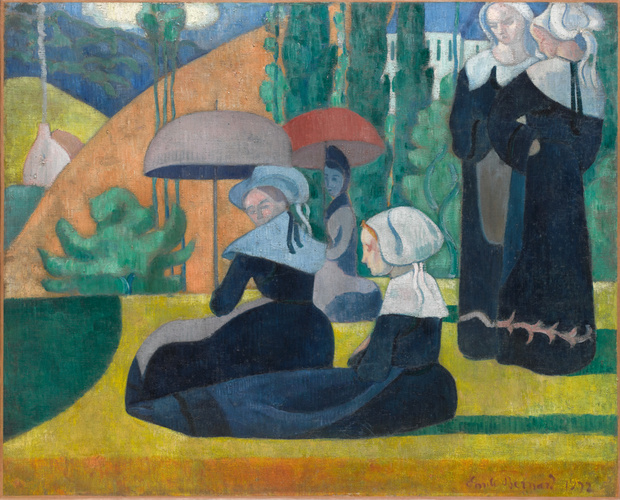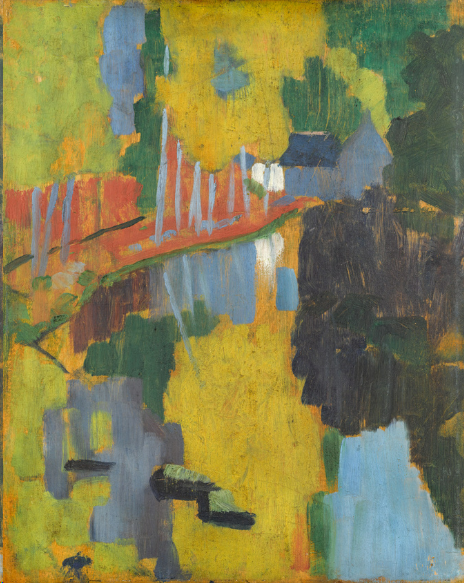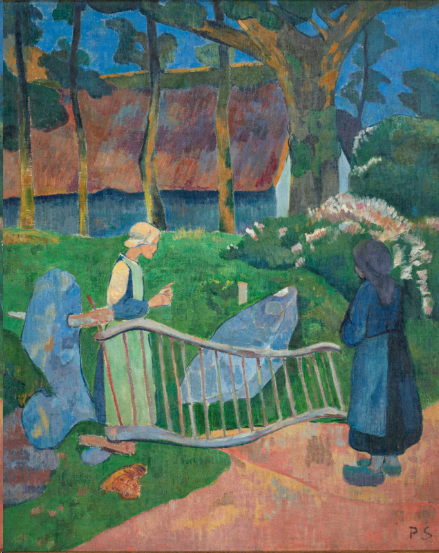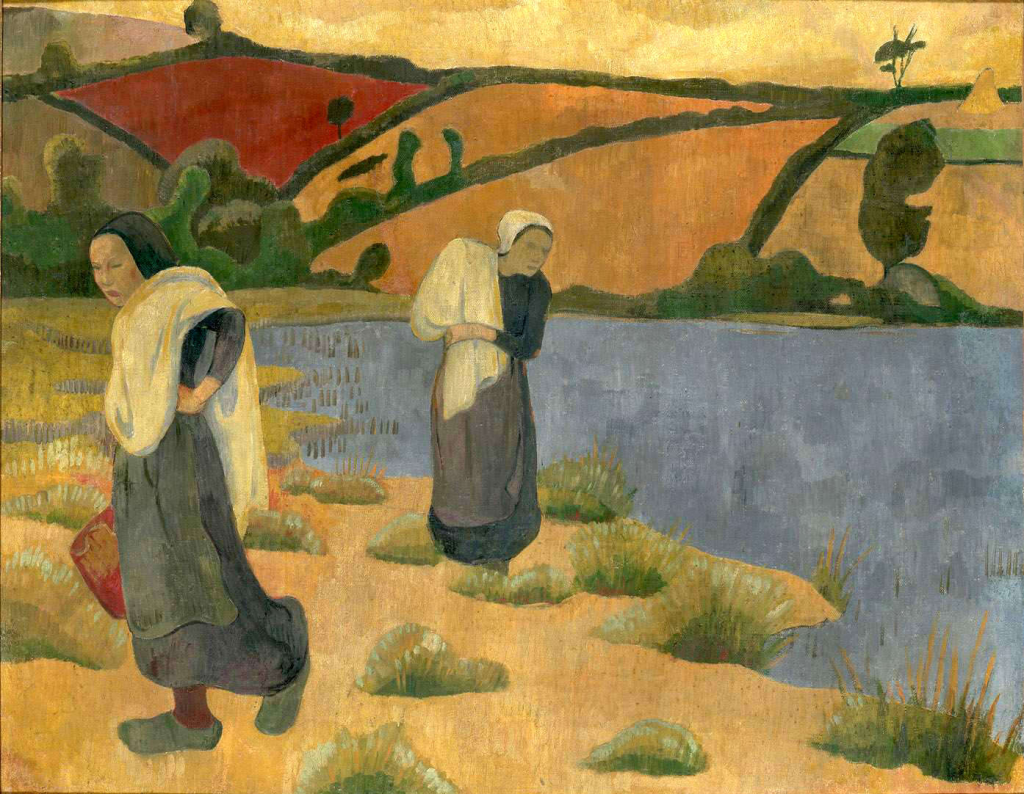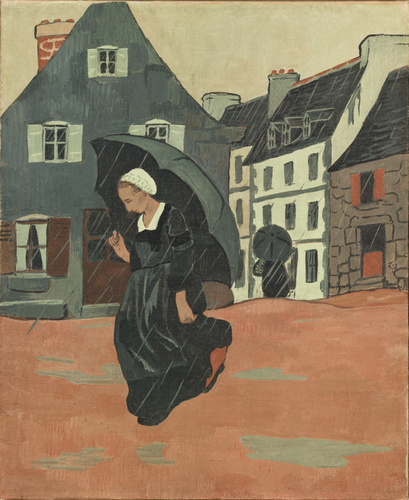Whilst in Pont-Aven and Le Pouldu in Brittany in 1886, Paul Gauguin developed a style of painting which used simple forms and pure, bright colours. Over the next couple of years he met other artists in Brittany including Emile Bernard and Paul Serusier and their experiments in painting culminated in a style known as Synthetism. Serusier’s painting ‘The Talisman’, completed under Gauguin’s guidance, would influence the work of his future ‘Nabis’ colleagues.
Synthetism concentrated on the outward appearance of natural forms.and used flat areas of pure colour to express the artist’s feelings about their subject. The Musée d’Orsay has a particularly impressive collection of paintings produced by these artists in Brittany during the late 1880s.
Paul Gauguin ‘La Belle Angèle’ (1889)
Paul Gauguin ‘Les Meules jaunes’ (1889)
Paul Gauguin ‘Self-Portrait with The Yellow Christ’ (1890 – 91)
Emile Bernard ‘Le Pardon’ (1888)
Emile Bernard ‘Madeleine au Bois d’Amour’ (1888)
Emile Bernard ‘Les Brettones aux ombrelles’ (1892)
Paul Serusier ‘Paysage au Bois d’Amour’ (‘Le Talisman’) (1888)
Paul Serusier ‘La Barrière fleuries’ (1889)
Paul Serusier ‘Les Laveuses à la Laita’ (1892)
Paul Serusier ‘L’averse’ (1893)
